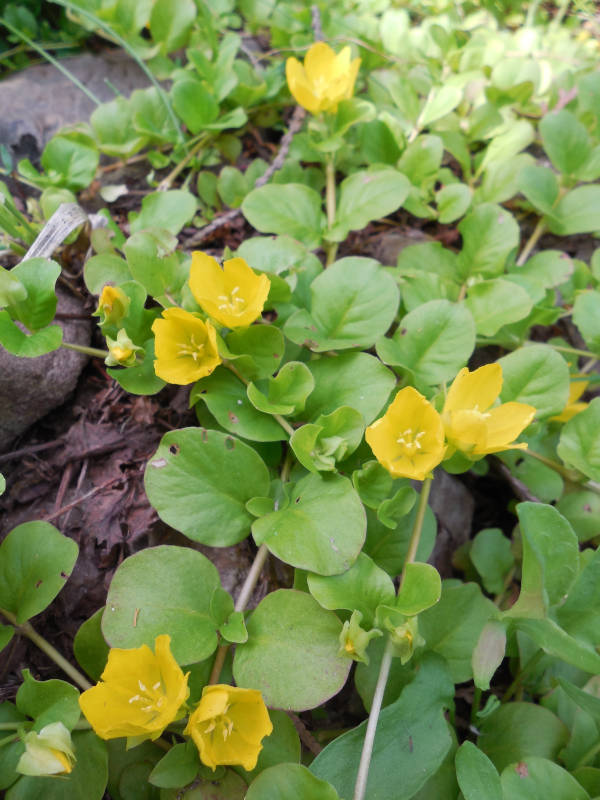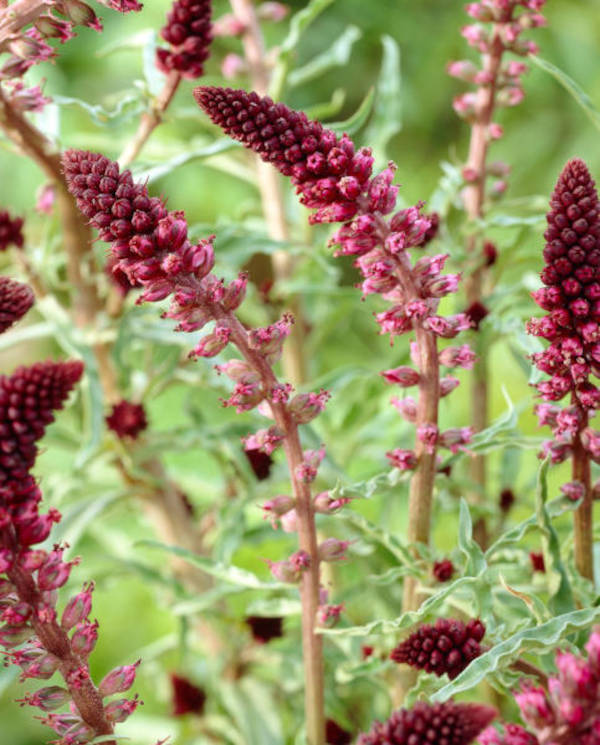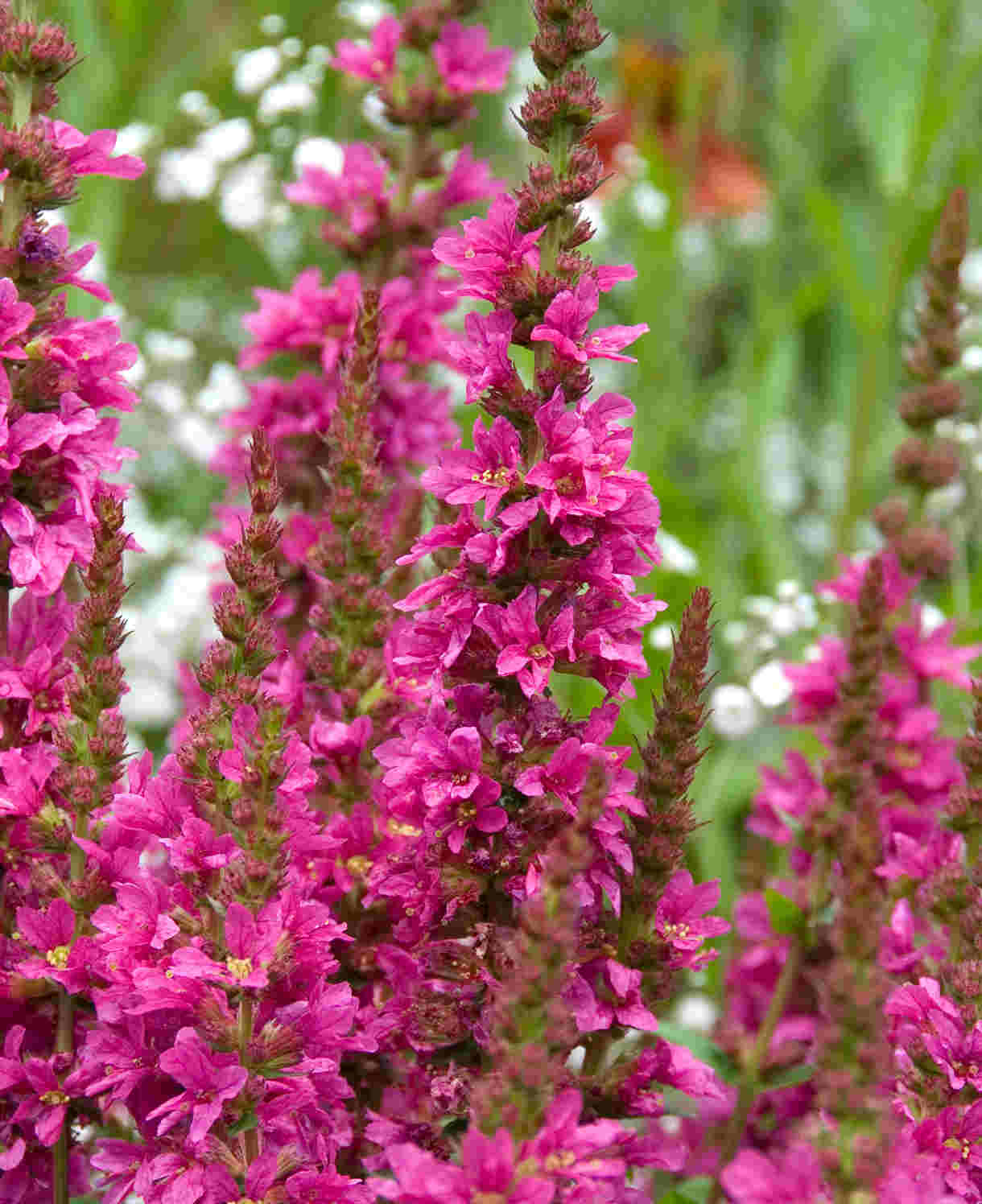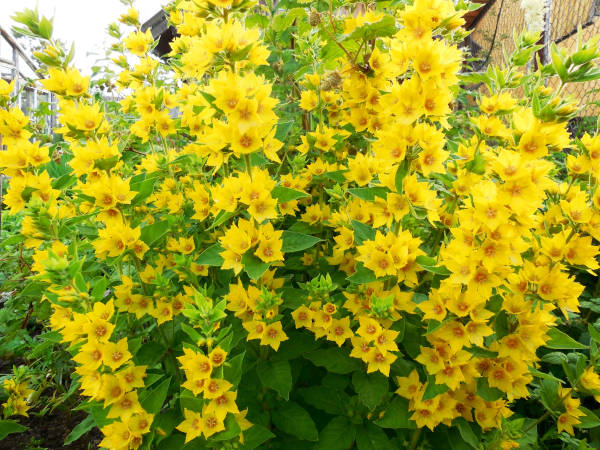How to grow Lysimachia
This member of the primula family contains around 150 species of herbaceous and evergreen perennials and shrubs. They can mainly be found growing in damp grassland and woodland, or by water.
Lysimachia is a wide-ranging genus. Some species are cultivated for their colourful or unusually shaped flower spikes, others for their trailing or ground-covering foliage.
Lysimachia can also be known by the common name of loosestrife, though (rather confusingly), this is also used to refer to members of the lythrum genus.

Zantedeschia is a genus of flowering plants from the family Araceae and is native to southern Africa. With a rich history dating back to the Ancient Romans, these deciduous or semi-evergreen perennials have been used as a symbol of celebration. Zantedeschia was Named after Professor Giovanni Zantedeschia, an Italian botanist.
There are two main forms of Zantedeschia: hardy and tender. Hardy forms of the plant can be grown outdoors, enjoy moist soil and full sun or partially shaded conditions - these are known as Arum lilies. Tender forms of Zantedeschia prefer being grown in containers or pots and should be brought inside over the winter - these are known as Calla lilies.
With tuberous flora in all colours from whites, yellows and oranges to deep reds and purples, Zantedeschias are not to be overlooked in any garden, as long as they have sufficient sunlight to grow in.
Ready to learn more about growing Zantedeschia? Read on for all there is to know...

Key Information
Soil pH
Position
Hardiness


Where & when to plant Lysimachia
For best results, plant in autumn or spring. An autumn planting can be done by those gardening in mild conditions (and broadly speaking, this is the southern half of the UK). For those liable to cold winters, it is best to wait until spring (generally the northern half of the UK). Planting can also be carried out in summer, though be prepared to water regularly.
Taller species can be grown in moist borders, bog gardens, or naturalised in a damp woodland garden. Smaller, low-growing species such as Lysimachia nummularia are suitable for use as ground cover or spilling over the edge of a mixed container or hanging basket.
All species prefer a reliably moist soil that does not dry out in summer.
How to plant Lysimachia
In the ground
- Clear the chosen area of weeds.
- Dig a planting hole several times larger than the root ball. Now is the time to give your soil a boost with the addition of plenty of well-rotted organic matter, and, if liable to sit wet, plenty of horticultural grit.
- Place the plant in the hole, ensuring the top of the root ball sits level with the surface of the soil. Too low and the plant may rot, too high and the roots can dry out.
- Backfill with soil and firm in gently.
- Soak well with water.
- Mulch around the base with well-rotted organic matter.
In a container
- Choose an appropriate container, ensuring there are plenty of drainage holes.
- It can be worth potting up large containers in situ to save yourself the trouble of moving once full.
- Use a good quality potting compost with plenty of horticultural grit mixed in, and, if not already present in the compost (check the description on the bag) some slow-release plant food.
- Start by partially filling the pot with compost; enough so that when placed on it the upper surface of the root balls are about 3cm lower than the top of the pot.
- Infill all the space surrounding the root balls with compost, firming down with your fingers then adding a little more so the plants are held tight.
- Pick up the pot (if you can!) and lightly tap on the potting bench or ground a few times to help further settle the compost around the plant.
- Soak well with water.
- A mulch with horticultural grit will look attractive and help to prevent a ‘cap’ or crust forming on the top of the compost (something container plants can suffer due to the artificial nature of their watering).

What to plant with Lysimachia
Tall species and cultivars (e.g., L . atropurpurea, L. ciliata, L. clethroides, and L. punctata)
Make the most of that damp border in the garden by planting as many moisture-loving plants as you can. We recommend delights such as filipendula, Lychnis flos-cuculi, leucojum, salix, aster, monarda, astrantia, and persicaria.
If your lysimachia is destined for a bog garden, suitable companions include ligularia, lythrum, Myosotis palustris, certain species of lobelia, or any of the plants from our Bog Garden Collection.
Low-growing species (e.g., L. nummularia)
Also known as creeping jenny, this species of lysimachia tends to be grown as part of a mixed container display. For best results it is important to select companions which share the same preference (or, at the very least, tolerance) for a consistently moist soil. As this is easiest to achieve when containers are out of the sun during the hottest part of the day, we suggest going for plants able to cope with partial shade (as lysimachia will). Options include begonia, heuchera, solenostemon (formerly coleus), lobelia, imperata, and suitably sized ferns such as doodia.



How to care for Lysimachia
Pruning and Deadheading
Cut back after flowering.
Lysimachia can spread once happily established in a suitable spot. To control this, simply dig out any unwanted shoots in spring.
Watering
Lysimachia needs to be kept consistently moist at all times and not allowed to dry out. By choosing an appropriate location and mulching at least once a year, the need for watering should be kept to the minimum of very hot, dry spells.
Container-grown lysimachia should be watered freely throughout the growing season.
Cold Protection
All our lysimachia is hardy and able to withstand a UK winter outside without the need for additional protection.
Pests and Diseases
Lysimachia tends to be largely pest and disease free, though you may find slugs and snails develop a taste for its leaves, particularly when newly planted. Encouraging natural predators into your garden, such as birds, frogs, toads, and hedgehogs, will make a big difference. Torchlight searches after dark (when slugs and snails are at their most active) are also effective, allowing you to collect the offending molluscs in a bucket. Place on the compost heap, or in a part of the garden containing less vulnerable plants.
Like most plants, once lysimachia is well established it tends to be better able to tolerate the actions of slugs and snails without the need for intervention.
How to propagate Lysimachia
Established clumps of lysimachia are best propagated by division in early spring. As well as providing new plants, this also maintains the health and vigour of existing specimens.
- Choose a day when the soil is not frozen or waterlogged.
- Dig the plant out of the ground.
- Shake off any excess soil.
- Separate the plant into sections using either swift, cutting blows with a sharp spade, or two forks inserted back-to-back with tines touching, handles then pushed together to prise the plant apart.
- Discard old, damaged, or surplus pieces, keeping healthy, vigorous material.
- Replant selected pieces where desired.
- Water well until fully established.
Common Lysimachia questions
Is lysimachia easy to grow?
Yes! As long as it is given the consistent moisture it requires, lysimachia will thrive with the minimum of fuss.
Does lysimachia self-seed?
Yes, when grown in optimum conditions, many species of lysimachia will self-seed, as well as spreading by underground rhizomes. This can be easily controlled by digging up unwanted shoots in spring.
Does lysimachia come back every year?
All our lysimachia are herbaceous perennials, meaning they die back in winter and reappear the following spring.





